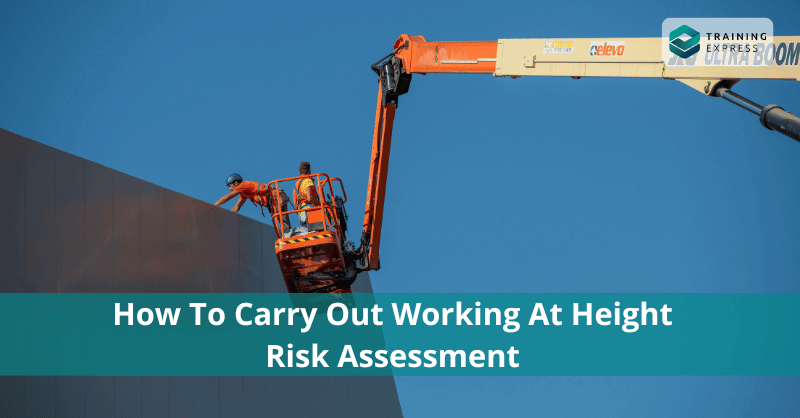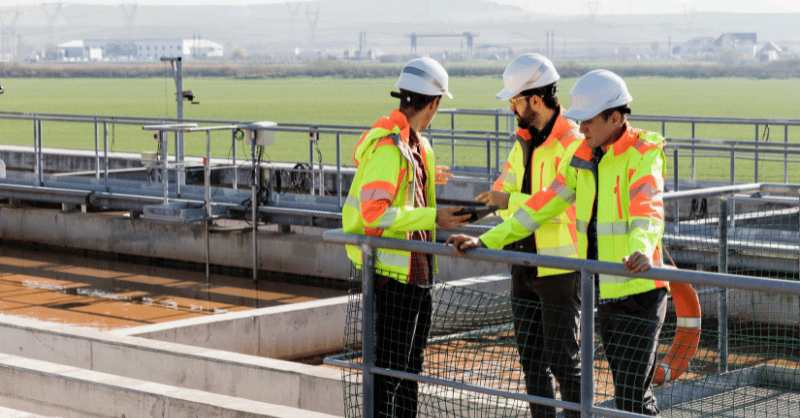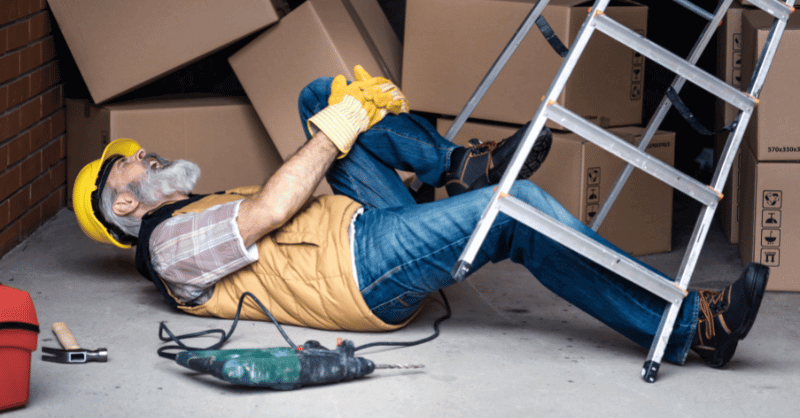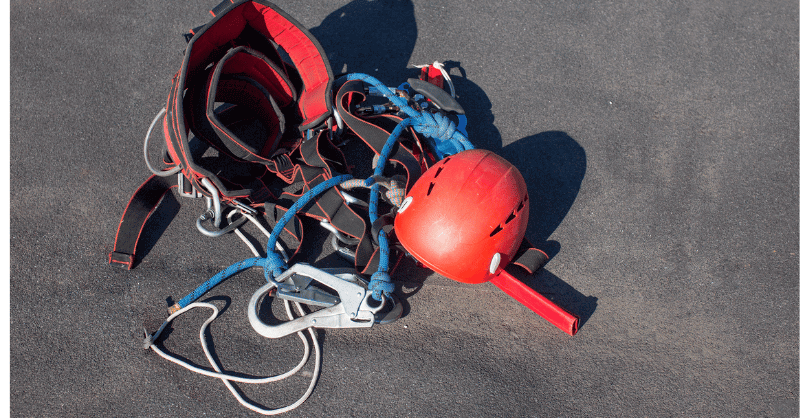

Back pain, bone fracture, spinal cord injuries, and even death can be caused by falling from heights while working. It is one of the significant causes of workplace injuries. In order to prevent unfortunate events, it is mandatory for both employers and employees to conduct a working at heights risk assessment. This assessment helps in identifying, preventing, avoiding and minimising injuries caused due to working in high places.
Table of Contents
What is Working at Height?
Working at heights is one of the most dangerous working conditions that can cause serious consequences and even death. Working at height means working in a high place from where if a person falls, they could hurt themselves. According to the Health and Safety Executive (HSE), “‘Work at height’ means work in any place where, if there were no precautions in place, a person could fall a distance liable to cause personal injury.”What is Working at Height Risk Assessment?
Working at height risk assessment is the process of evaluating the risks and hazards related to working above the ground level. The risk assessment helps to determine if proper precaution was taken to protect the workers. It is also a legal obligation for employers to identify the risks and implement proper control measures. The working at heights risk assessment has five steps. These steps are- Identifying Hazards
- Assessing the Risks and Identifying Who may Get Harmed
- Evaluating the Risks
- Documenting the Findings
- Reviewing and Updating
5 Key Steps of Working at Height Risk Assessment
A brief explanation of the 5 key steps of the risk assessment is given here.
Risk Assessment Step 1: Identifying Hazards
- The first step of the risk assessment process is detecting the risks that are present in the workplace. You can identify the risks by observing the workplace, talking to the workers and taking feedback, reviewing previous accidents etc.
Risk Assessment Step 2: Assessing the Risks and Identifying Who may Get Harmed
- In the second step, The risks and hazards are evaluated. Then the people who are most likely to get harmed are identified. In this stage, you have to figure out what group of people are at risk of specific hazards.
Risk Assessment Step 3: Evaluating the Risks
- The third step involves evaluating the risks and taking the proper precautionary steps. It is important to check if you can eliminate the hazards. If not, you can try alternative ways, such as choosing a less risky option, avoiding the hazard area, and educating the staff on the hazard and control measures.
- In addition, it is also important to examine the control measures and determine if they are enough. Finally, you should check if it is necessary to implement more control measures.
Risk Assessment Step 4: Documenting the Findings
- In the fourth step, you have to document your findings. While recording the results, you must ensure that a thorough check is made. In addition, you have to make sure that the significant hazards are taken care of, and proper control measures are implemented. Furthermore, remember to write down the details like the date, the information of the assessor, the area the assessment took place etc.
Risk Assessment Step 5: Reviewing and Updating
- Every 6–12 months, you should review the assessment and figure out if there are any changes in the workplace. Next, you should check if you need to improve the control measures or add new ones. In addition, if there is new equipment in the workplace, you have to educate the staff about the safety steps to use the equipment.
It is very important to review and update the risk assessment. It allows you to keep the safety measures up to date. Also, prevents the workers from new potential risks in the workplace.
Why is Working at Height Risk Assessment Necessary?
There are many reasons why working at heights risk assessment is important. Some major reasons are given below.
- Risk assessments assist in identifying and preventing accidents
- It helps in checking if the control measures are adequate. Furthermore, the assessment helps to understand if they are up to date
- This assessment plays a vital role in reducing the number of work-related injuries
- When the workers know that a risk assessment has been conducted they feel safe and can focus on their tasks
- When the employer conducts a risk assessment, the workers understand that their safety is valued, and they feel motivated to work. This also plays a significant part in increasing employee retention

Control Measures for Working at Heights
You can follow these control measures for working at Heights.
- Avoid: If it is possible, avoid working at heights
- Prevent: When it is not possible to avoid working at heights, you can use a safe place to work and proper equipment to prevent falls
- Minimise: Try to minimise the distance and consequences of the accidents with the help of the right instruments
Dos and Don’ts of Working at Height
A list of things you should do and should not do is provided below
Do
- Try to avoid working at heights
- Ensure protection from falling objects
- Take proper protective measures while working on weak surfaces
- Make sure all the equipment is in good condition
- Ensure it is possible to provide safety where the employers work
- Have a well-designed rescue plan
Don’t
- Overreach on the ladder
- Place a ladder on a weak surface
- Overload the ladders
- Use ladders for carrying heavy loads
Work at Height Regulations 2005
The Work at Height Regulations 2005 is the regulations put together by the UK government to protect workers working at heights. This set of rules was designed to ensure proper plans, the right instruments and control measures are in place to avoid and reduce accidents. Also, this law makes it mandatory to conduct risk assessments and act accordingly before workers start working at heights.
5 Main Risks and Hazards of Working at Height
Working at heights is a high-risk job. There are many hazards associated with working in a high place. Here is a list of top 5 risks related to working in places way above the grounds
- Falls, Slips and Trips
Many things, such as tools and equipment, can be laying around the surface. These can cause trips, slips and falls. In addition, improper footwear and uneven surface can cause trips and falls.
- Weak Roofing
Most of the time, roofs can not take the workers’ weight, which results in breaking down and jeopardising the workers’ lives. That’s why it is essential to conduct an assessment and take the proper precautions before working on top of roofs.
- Wet Weather
The weather can increase the risk of working at heights to great lengths. Strong winds can weaken the structure of elevated platforms. Also, rain and snow make the surface slippery and increase the possibility of slips and trips. In addition, fog and rain cal disturb the visibility of the workers.
- Falling Objects
While working at heights, there is a possibility that the tools, equipment or other materials can fall on workers and passers-by. As a result, it can create severe injuries and also damage other tools and equipment.
- Defective Platforms and Scaffolds
Elevated platforms and scaffolds are standard instruments for workers working at heights. Therefore, if there is some kind of structural defect or malfunction in the platforms, it can be very dangerous for the workers. Furthermore, fragile platforms will harm not only the workers working on the platforms but also those who are underneath.
Strategic Planning When Working at Heights
First and foremost, see if working at heights is avoidable. If it is not an absolute necessity, avoid working in high places. However, if it is mandatory to work at heights, check if you can prevent accidents like falls or trips. On the other hand, using the right tools and equipment for preventable accidents can help avoid accidents. But if the accidents are unavoidable, you must use safety gear and harness for protection. Moreover, it is crucial to provide proper training to the workers on working at heights.
General Safety Tips for Working at Heights
It is crucial to maintain safety precautions while working at heights. The more safety measures you can take, the better. Here is a list of some effective safety tips that will help you ensure safety
- If possible, try to avoid working at heights or look for alternatives
- Find out the best anchor point that can provide proper support
- Be careful on the ladder. Never try to overreach or overload
- Choose the proper work gear while working at heights
- Try to use the right equipment that will reduce the fall distance
- Never forget to use the fall protection barriers and rails
- Train your staff on working at heights

Sample of Working at Heights Procedure
Down below, you will find a sample of working at heights safety procedures
- Conduct a detailed assessment of the elevated platforms, scaffolds, PPE and fall arrest equipment
- Check how much load the platform and the fall arrest equipment can take
- Make sure to check the skills and fitness of the workers before they start working at heights
- Use the essential measures to secure the tools and other objects while working on elevated platforms so that they don’t fall and hurt others
- If any hazards or risks are identified, inform the employer or the concerned personnel as soon as possible
Some Frequently Asked Questions (FAQs) about Working at Heights:
Here are the answers to some commonly asked questions about working at heights risk assessment
Do you need a risk assessment for working at height?
Yes, you do need a risk assessment for working at heights. It is not only a moral responsibility of the employer but they are also legally bound to conduct a risk assessment.
What are the key elements of risk assessment for work at height?
The key elements for risk assessment at heights are
- Identifying Hazards
- Assessing the Risks and Identifying Who may Get Harmed
- Evaluating the Risks
- Documenting the Findings
- Reviewing and Updating
What is the final step in a risk assessment, working at height?
The final step of the working at heights risk assessment is reviewing and updating. Elevating the workplace every 6 -12 months and reviewing the risk assessment is important. Also, you should make the necessary adjustment after the review is complete.
Is working at height a hazard?
Working at heights is considered a hazard as it is associated with many risks. It is one of the main causes of workplace injuries. Therefore, proper precautionary activities must be taken while working at high places.
What is the working at height risk assessment method statement?
The method of statement is a statement that records the hazards related to particular working at height tasks. In addition, it communicates the precaution required for the risks.
When should high-risk work at heights assessments be reviewed?
The risk assessment should be reviewed every 6 months to 12 months. Reviewing is important as it allows you to keep the safety measures up to date.
Final Words
Working at heights poses serious threats. However, it is possible to reduce these threats by taking the proper control measures. The working at height risk assessment helps to understand where the risks are and allow you to take the essential steps to eliminate the risks. Therefore, it is crucial for the workers and the employers to have a solid grasp of working at heights risk assessment.
- Available Courses
- Career Bundles73
- Animal care5
- Law8
- Quality Licence Scheme Endorsed111
- Teaching13
- Teaching & Academics Primary26
- Accounting & Finance Primary30
- Training3
- Design14
- IT & Software128
- Healthcare126
- Marketing31
- Health and Safety403
- Construction48
- Electronics25
- Hospitality22
- Health and Social Care219
- Child Psychology37
- Management378
- Business Skills268
- First Aid70
- Employability264
- Safeguarding75
- Food Hygiene103
- Personal Development1346
 Food Hygiene
Food Hygiene Health & Safety
Health & Safety Safeguarding
Safeguarding First Aid
First Aid Business Skills
Business Skills Personal Development
Personal Development












